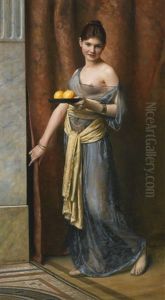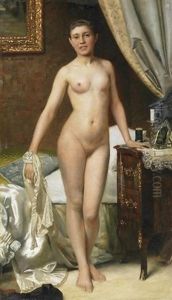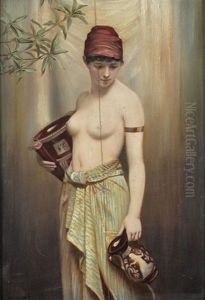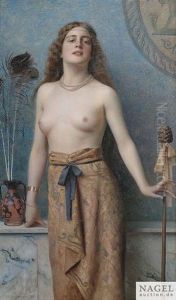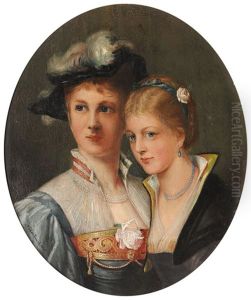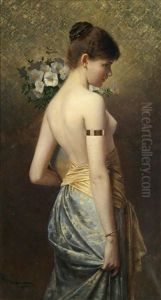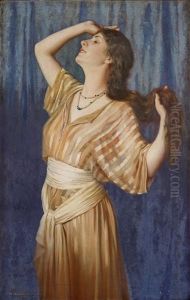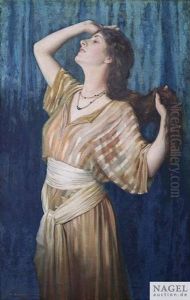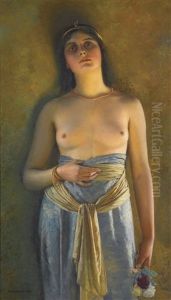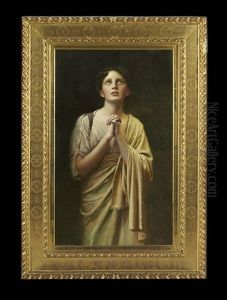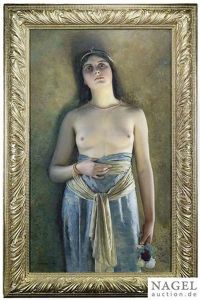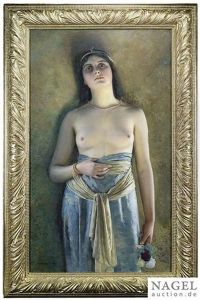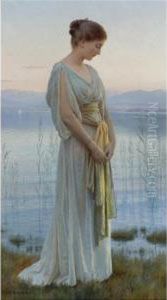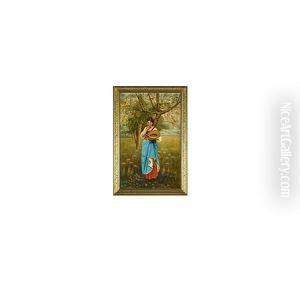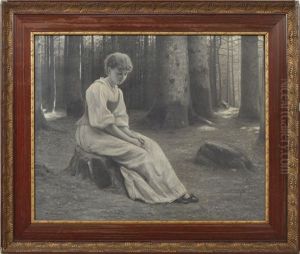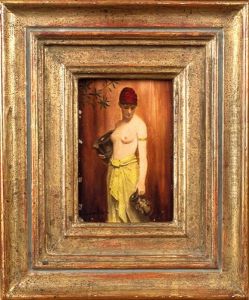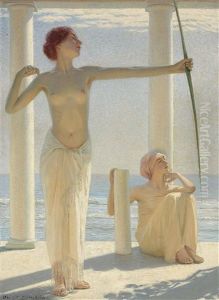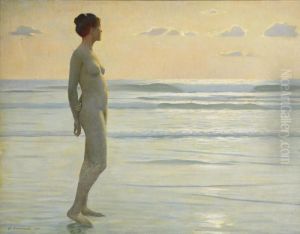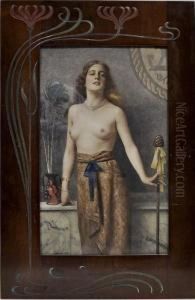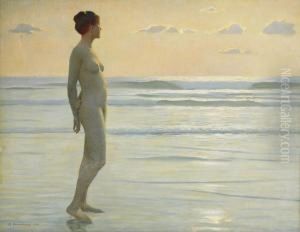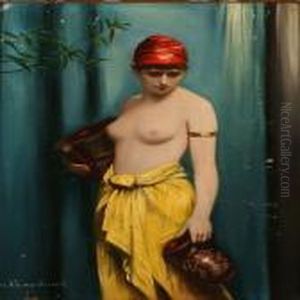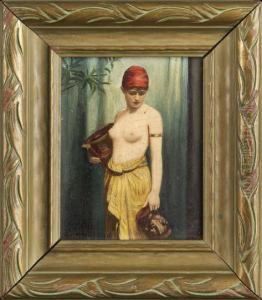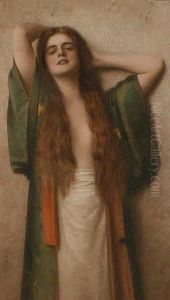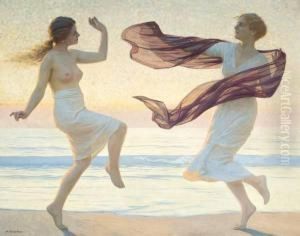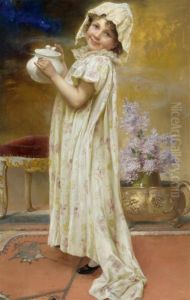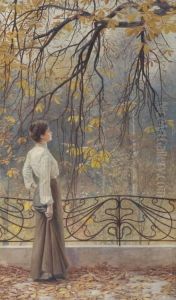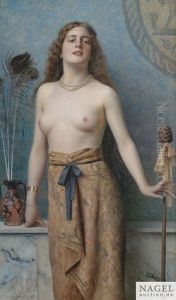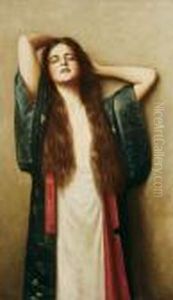Max Nonnenbruch Paintings
Max Nonnenbruch was a German painter, recognized for his contributions to the Symbolist and Academic art movements of the late 19th and early 20th centuries. Born on April 9, 1857, in Essen, Germany, Nonnenbruch demonstrated an early inclination towards art, which led to his formal training at the Düsseldorf Academy of Arts under the tutelage of Eduard von Gebhardt and Julius Roeting.
During his time at the Academy, Nonnenbruch honed his skills in traditional painting techniques. He was influenced by the academic standards of the time, which emphasized classical forms, meticulous attention to detail, and historical and mythological themes. After completing his studies, Nonnenbruch traveled extensively throughout Europe, including Italy, where he was deeply inspired by the Renaissance masters.
Nonnenbruch's work quickly gained popularity for its lush, romantic portrayals of women, often depicted within mythical or allegorical settings. His paintings were marked by a soft, dreamlike quality, and he made use of a rich palette and delicate lighting to evoke a sense of idealized beauty and sensuality.
In the late 19th century, Nonnenbruch became associated with the Symbolist movement, which sought to express ideas and emotions through symbolic imagery and an emphasis on mood. While he maintained his academic roots, his later works displayed a greater focus on the symbolic content and a departure from strict realism.
Throughout his career, Nonnenbruch exhibited his works in various salons and galleries, achieving significant success and recognition. His art was particularly well-received in Germany and garnered a following among collectors and art enthusiasts of the era.
Max Nonnenbruch's career was also marked by his involvement in art education. He took on a teaching role at the Academy in Karlsruhe, passing on his knowledge and skills to the next generation of artists.
Nonnenbruch continued to paint until his death on February 13, 1922, in Munich. His legacy is preserved through his paintings, which remain on display in numerous museums and collections. They continue to be admired for their technical excellence and the evocative, romantic beauty that defines the artist's unique style.
